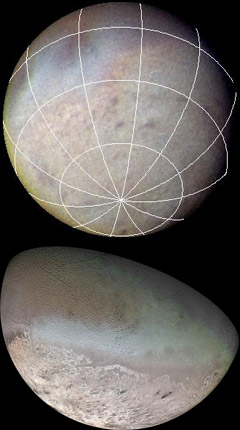These two images show Triton's South Pole. The nitrogen ice polar cap is the light pink area along the bottom and lower left parts of the lower image.
Click on image for full size
Images courtesy of NASA/JPL/USGS.
The Poles of Triton
Triton is by far the largest moon of Neptune, and is one of the most unusual large moons in the Solar System. The poles of Triton are especially interesting.
Triton has a frozen polar cap with ice geysers. This frigid moon has a very high surface albedo (it is covered with bright, shiny ices), especially at the South Pole. The pole is topped with a cap of nitrogen and methane ices. Scientists have spotted darker smears near Triton's South Pole, which they believe are surface deposits of materials downwind of cryovolcanoes (ice geysers or ice volcanoes). This makes Triton one of only four Solar System bodies on which active volcanism has been observed; the other three are Earth, Jupiter's moon Io, and Saturn's moon Enceladus. Astronomers suspect that Triton's North Pole is also covered by an ice cap; however, the moon's northern hemisphere has never been imaged in detail.
Thanks to an odd mix of orbital geometries of both Triton and its "parent" planet Neptune, Triton's poles spend most of their time in either perpetual darkness or perpetual light. Triton may have been a Kuiper Belt Object that was captured into orbit by Neptune's gravity in the distant past. The moon's orbit is tilted by a large amount away from Neptune's equator. Triton's odd orbit combined with Neptune's axial tilt and long orbital period (more than 164 Earth years) make for very, very long seasons at the moon's poles. Triton's poles alternate between 80+ years of perpetual summertime daylight and 80+ years of winter darkness.
You might also be interested in:

How did life evolve on Earth? The answer to this question can help us understand our past and prepare for our future. Although evolution provides credible and reliable answers, polls show that many people turn away from science, seeking other explanations with which they are more comfortable.
...more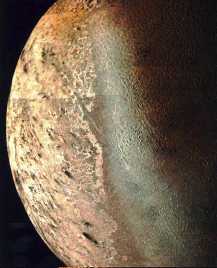
Triton was discovered by W. Lassell in 1846. Of the 8 moons, it is the 2nd farthest from Neptune, with a standoff distance of 354,800 km. Triton may be one of the largest of the icy moons, is comparable
...more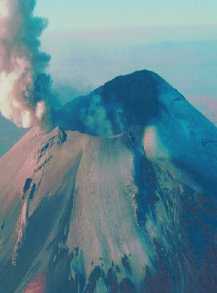
There are several ways in which a volcano can form, just as there are several different kinds of volcanoes. Volcanismis part of the process by which a planet cools off. Hot magma, rising from lower reaches
...more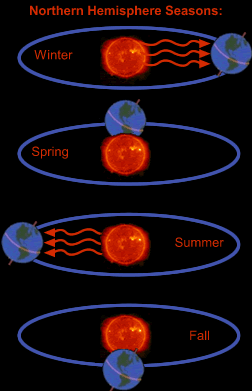
The Earth travels around the Sun one full time per year. During the year, the seasons change depending on the amount of sunlight reaching parts of the Earth. The seasons are caused because the Earth is
...more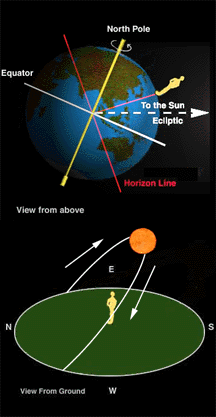
Let's pretend, for the moment, that you're the person standing on the Earth in the picture to the left, living in Topeka, Kansas, around 40° N latitude. The picture on the left shows the view from the
...more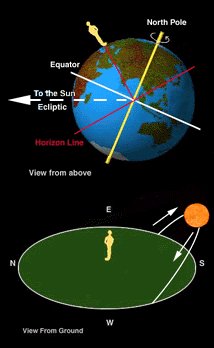
Let's pretend, for the moment, that you're the person standing on the Earth in the picture to the left, living in Topeka, Kansas, around 40° N latitude. The picture on the left shows the view from the
...more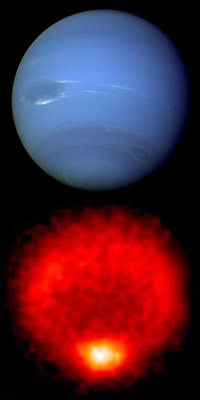
The South Pole of the planet Neptune is unusual in several ways. Triton, Neptune's largest moon, also has interesting features at its poles. Like Earth, Neptune's spin axis (which defines the locations
...more
Composition is generally determined by detailed measurements of the spectra of an object. Spectral measurements of the surface of Triton reveal the presence not only of ice but of several different kinds
...more


